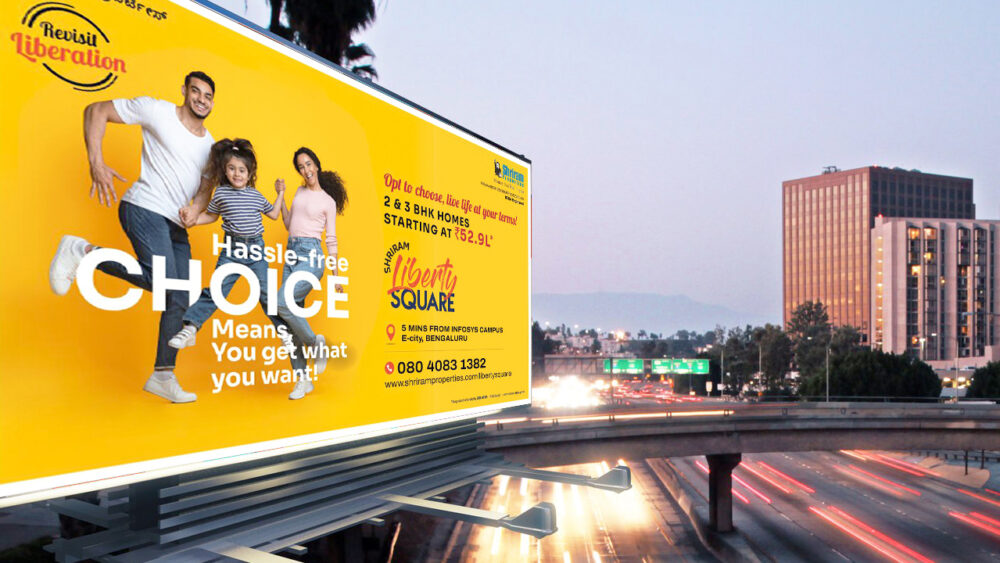Advertising expenditure in the outdoor media market, such as billboards and transit advertising, is set to soar this year, clocking 15 per cent growth year on year. Since it cannot be skipped by consumers or blocked in outdoor environments, the out-of-home (OOH) medium has remained the core channel to reach mass urban audiences.
Top spenders
In 2017, the OOH market in India grew by 6 per cent and now stands at ₹3,085 crore. While retail topped the list of spenders on OOH, the telecom sector recorded the highest growth in OOH advertising, courtesy the high-voltage launch of Reliance Jio, according to Sam Balsara, Chairman of media buying agency Madison World.
“In 2016, yearly spends on the OOH medium were ₹2,910 crore, while it rose to ₹3,085 crore in 2017. This year, we are expecting OOH spends at ₹3,395 crore. Though e-commerce will remain the backbone, the organised retail sector will continue to show the highest growth on this medium,” Balsara said.
As the reach of digital crosses 450 million and the smartphone Internet user-base crosses 300 million in India, “digital is likely to hit the big boys of media in a bigger way than it already has,” he added.
Govt spending
Underscoring this, a new analysis of the sector by WARC Data has noted that successful brands tend to allocate 13 per cent of their media budgets to OOH advertising.
February’s Global Ad Trends report by WARC, which distils data from 96 countries and has detailed findings from 12 key ad markets including India, shows that the heaviest OOH spenders were government and non-profit campaigns, which committed an average of 26 per cent of total budgeted spend on OOH. In India too, outdoor media is expected to grow by 10 per cent in 2018, to reach a size of ₹3,395 crore, on the back of upcoming elections and government campaigns.
“The outdoor medium is expected to substantially gain from the Central and State government’s publicity and election campaigns, because of the ensuing eight State Assembly Elections in 2018 and Lok Sabha Elections in 2019,” said Balsara, adding the OOH advertising market has grown by 6 per cent in 2017 to reach a size of ₹3,085 crore. Its contribution to the advertising pie was 5.8 per cent.
Industry growth
With the Indian ad industry pegged to touch the ₹77,623-crore mark by 2020, and expected to grow at a very high rate over the next few years, Ashish Bhasin, Chairman and CEO South Asia, Dentsu Aegis Network, said growth would be driven by lower data spends, the smartphone revolution and the subsequent spends on digital advertising.
“In terms of proportion of ad spends on digital, e-commerce spends would be the highest followed by telecom, banking and financial institutions, and the media and entertainment sector. Backed by growth of the Indian e-commerce industry, the Internet economy is expected to double by 2020,” he added.
Incidentally, digital OOH is transforming the face of outdoor advertising. Though a new media format, digital OOH is making rapid strides in the international market, though in India it is a different story.
Debraj Tripathy, Managing Director, MediaCom South Asia, a leading media agency said, “OOH media in India is definitely not in the same league as in parts of the developed world. Two areas need to be focused on for the medium to get its due. The first is the use of technology in enhancing the medium. This will not only make it measurable but also lead to innovations and make the medium more impactful.”
Focus on content
The second is the focus on content. “Very often than not, OOH creatives are adaptations. They are not developed keeping the medium in mind. This brings down the overall effectiveness of the medium,” he added.
WARC’s James McDonald noted in the report that OOH “is an industry staple, attracting a consistent share of successful brands’ budgets over the long term. OOH is well placed for future advancement with rising digital penetration delivering flexible creative informed by rich audience data.”




Hi, this is a comment.
To get started with moderating, editing, and deleting comments, please visit the Comments screen in the dashboard.
Commenter avatars come from Gravatar.